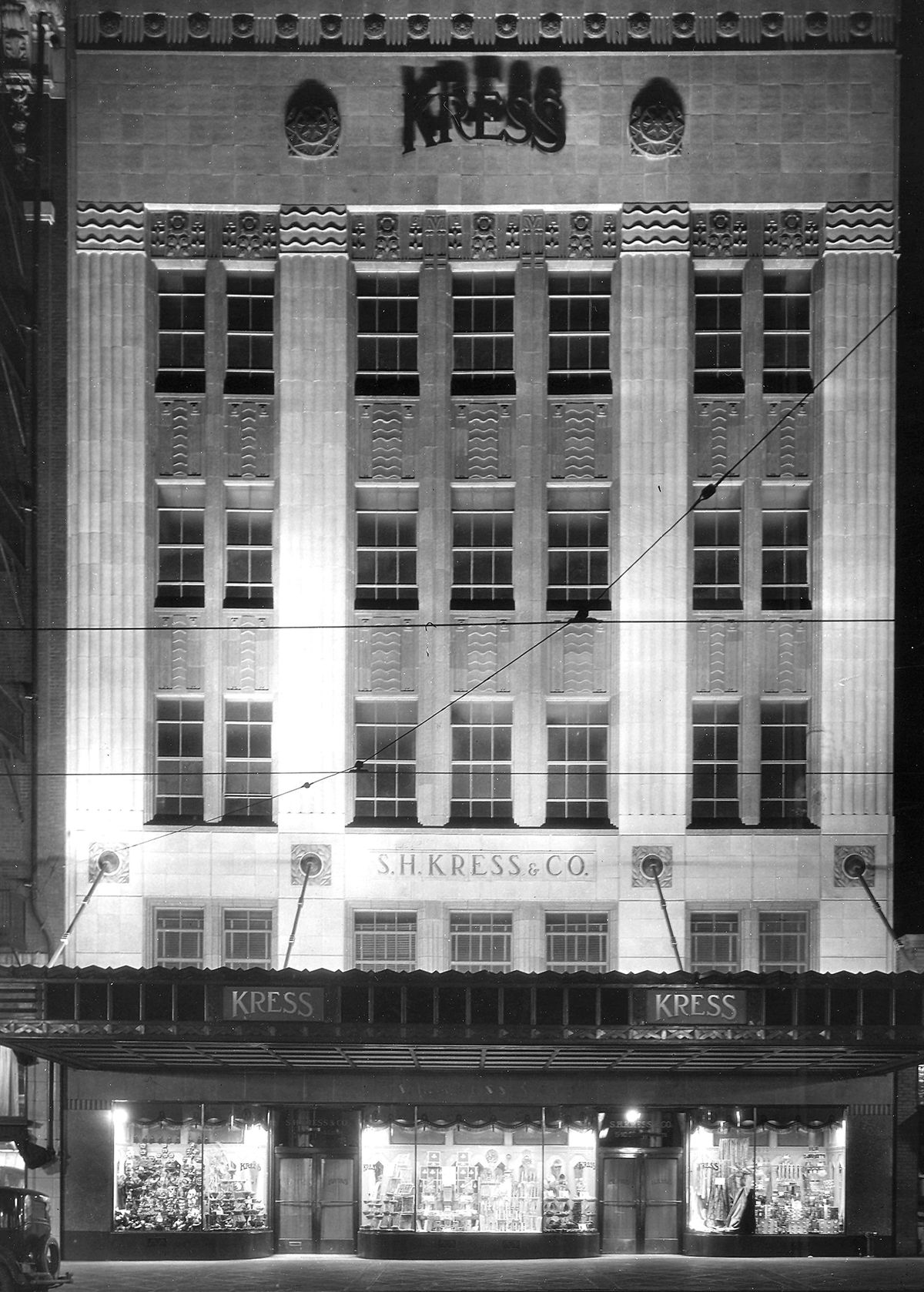Then and Now: Kress Building

Samuel Henry Kress, born in Pennsylvania in 1863, joined the retail business revolution of the late 1800s and built a chain of discount stores that grew to 264 establishments.
Kress, the descendent of German and Irish immigrants, opened his first Kress five-and-dime store in Memphis, Tennessee, in 1896. The history found on the Kress Foundation website says his stores sold “affordable, durable and cheerful domestic merchandise.”
As Kress built his chain, he focused on grand architecture and elegant décor for his stores, which competed with Woolworth’s and other dime stores. His Spokane store, built in 1931, is a sturdy cement structure faced with terra cotta tile in the art deco style.
The Spokane Kress had a restaurant in the basement. “Everything – from the constantly restocked merchandise to the gracious retiring rooms and popular soda fountain in the basement – encouraged customers to linger,” according to the account of the company’s history.
Spokane’s architectural historian Robert Hyslop wrote, “When I was earning $21 a week (in the 1930s), I had good lunches there, with pecan pie for dessert, for 35 cents.”
Hyslop wrote that the Kress store, later calling itself a “5 cent to a dollar” store, was known for a little better quality merchandise than other dime stores.
Samuel Kress died in 1955 and his stores were sold to Genesco in 1964. Kress’ new owners closed many of their inner-city stores, including Spokane’s. In the 1970s, the Kress building was altered to connect it to Nordstrom’s previous location.
When River Park Square was rebuilt in the 1990s, the Kress again was incorporated into the new mall.
Surviving Kress buildings around the country have been converted to residences, restaurants, theaters and nightclubs. The ornate facades, heavy bronze doors, terrazzo floors and polished marble and wood interiors were unusual for a 1930s dime store.
“Like the great movie houses of the day, the dime store – and ‘Kress’ in particular – was a popular destination during hard economic times,” says the Kress Foundation website.
– Jesse Tinsley